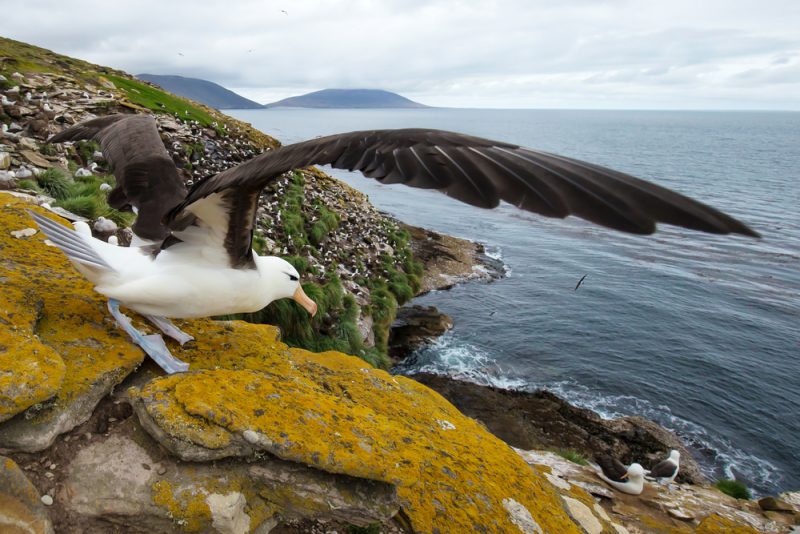A passion for the natural world drives many of our adventures. And when we’re not actually outside, we love delving into the discoveries about the places where we live and travel. Here are some of the best natural history links we’ve found this week.
The biggest meal
Orcas can kill blue whales: Scientists have recorded orcas hunting and eating a blue whale for the first time. “This is the biggest predation event on this planet: the biggest apex predator taking down the biggest prey,” says marine ecologist Robert Pitman. Twelve orcas chased the blue whale until it tired and slowed enough for them to attack. At this point, more orcas joined in. All 20 orcas bit into the blue whale and forced it underwater.
The new study documents three blue whale killings over the last three years. Previously. orcas have been seen attacking the larger whales but never killing them. In two of these killings, the orcas targeted smaller juvenile blue whales, but the third saw them going after a healthy adult.
It is possible that orcas have always hunted blue whales, but blue whale numbers plummeted throughout the 20th century, which suggests why no one has witnessed this before. The lack of blue whales forced orcas to seek out other prey. Now, as blue whale numbers increase, orcas could be returning to their original food source.

Blue whale. Photo: Shutterstock
How risky is paragliding? Researchers recently analyzed the risk of paragliding. Surveys with paragliding pilots in the UK revealed that while only 6% had received medical attention due to the sport, 26% admitted that they had had a near miss while flying. The main cause of these accidents or close calls was pilot error. Very few were equipment error. One result surprised scientists: Most assume that with more flying hours, the risk of injury decreases. In fact, it is just the opposite: For every hour spent gliding, a pilot’s likelihood of an accident rises.

Paragliding: the more you do, the likelier the chances of an accident. Photo: Shutterstock
Deeper divers
Albatrosses can dive much deeper than previously thought: Albatrosses are famous for their long-distance journeys but are usually considered poor divers compared to smaller seabirds like shearwaters. But black-browed albatrosses can dive 19 metres underwater — three times the previously known depth — and submerge for up to 52 seconds. Researchers used miniature depth loggers to document black-browed albatrosses in the Falklands. They only dove deeply during the day.

Black-browed albatross in the Falklands. Photo: Shutterstock
New species found near Mekong River: Along the Mekong River, 224 new species have turned up. The Mekong River runs through the Tibetan Plateau, China, Myanmar, Laos, Thailand, and Cambodia. This includes 155 plant species, 16 fish, 17 amphibians, 35 reptiles, and one mammal –- the Popa Langur. The little monkey has white rings around its eyes. Only 250 of the monkeys were found, the majority on Mount Popa, a 1,500m dormant volcano in Myanmar. The small population suggests that the species will be classified as critically endangered. “These finds…demonstrate that the region is still a front line for scientific exploration and a hotspot of species diversity,” said the World Wildlife Fund.
Journey to the bottom of the sea
Bigfin squid seen 6km below sea level: A submersible sub has found a bigfin squid six kilometres below sea level. This makes it the deepest dwelling of all squid. Previously, 4.7km marked the deepest bigfin sighting on record. Researchers found the squid while searching for a destroyer ship from World War II in the Philippine Sea.
Scientists knew that cephalopods (squid, octopuses and cuttlefish) live in the deep ocean, but this suggests that their presence in ocean trenches is more common than previously thought.

The elusive bigfin squid. Photo: NOAA Ocean Exploration/Gulf of Mexico 2012 Expedition
The panda’s chubbiness factor
Giant panda’s gut bacteria help them stay chubby: It is rare to see a skinny giant panda. The black-and-white bears are famously chubby. It turns out that this is because of bacteria in their gut. Curious researchers wanted to know how the pandas maintain their size and health over winter when their diet consists of low-quality bamboo. From August to April, they rely on fibrous bamboo leaves, while between April and August they can eat protein-rich bamboo shoots.
It turns out that the bears’ gut bacteria changes with the seasons. The bacteria present while they are eating nutritious bamboo shoots help them store fat that they can use during the leaf-eating season. “Identifying what bacteria are beneficial is very important, because one day we may be able to treat some diseases with probiotics,” said Guangping Huang.
Illegal gold mines flood Amazon forests with toxic mercury: The section of the Amazon rainforest in Peru’s Los Amigos Conservation Concession has a toxic secret. Its mercury levels are as high as those in industrial regions in China. This rainforest, the so-called lungs of the world, also conceal hundreds of small, illegal gold mines. Gold mining now tops coal as the biggest source of airborne mercury.
Miners use mercury to extract gold, as the liquid metal binds to the gold. They heat the bound gold and mercury, and the mercury then vaporizes. The trees in the rainforest act like a sponge and soak up huge amounts of the toxic metal. Although it is locked away in trees, the mercury works its way through rivers and ponds and into the food chain. Mercury levels in 7 out of 10 black-spotted bare-eyes, a small songbird, are now high enough to cause infertility.






